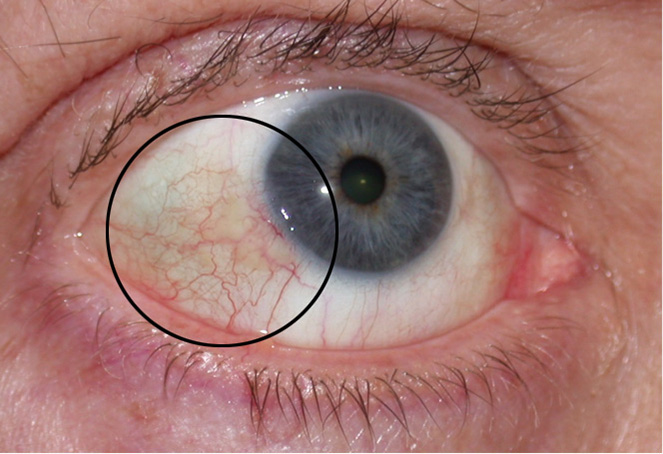What are the symptoms of pinguecula?
Pinguecula is a common, benign growth on the conjunctiva, the clear tissue covering the white part of the eye. It usually appears as a yellowish, raised area on the conjunctiva, typically on the side of the eye closest to the nose. The symptoms of pinguecula can include:
Symptoms of Pinguecula
- Yellowish Bump: A small, yellowish, raised growth on the conjunctiva, often located near the cornea.
- Eye Irritation: Mild irritation or discomfort in the affected eye, which may feel dry or gritty.
- Redness: Redness or inflammation around the pinguecula, although this is less common.
- Tearing: Increased tearing or watering of the eye.
- Dry Eye Sensation: A feeling of dryness in the eye, which may be associated with environmental factors like wind or sun exposure.
- Blurred Vision: Rarely, if the pinguecula becomes large or inflamed, it might cause a slight blur in vision.
Pinguecula is generally harmless and does not typically affect vision. However, if the growth becomes particularly bothersome or if there is significant inflammation, it may be worth consulting an eye specialist for evaluation and management. In some cases, treatments like lubricating eye drops or anti-inflammatory medications may be recommended to alleviate symptoms.
What are the causes of pinguecula?
Pinguecula is primarily caused by long-term exposure to environmental factors. The key causes and risk factors include:
Causes of Pinguecula
- Sun Exposure: Prolonged exposure to ultraviolet (UV) light from the sun is a major risk factor. UV radiation can cause damage to the conjunctival tissue, leading to the development of a pinguecula.
- Wind and Dust: Frequent exposure to wind and dust can irritate the conjunctiva, contributing to the formation of pinguecula.
- Environmental Irritants: Other environmental factors, such as pollution and smoke, can also contribute to the development of pinguecula by irritating the eye and conjunctival tissues.
- Age: Pinguecula is more common in older adults as a result of cumulative exposure to environmental factors over time. It is less common in younger individuals.
- Genetics: There may be a genetic predisposition to developing pinguecula, though this is less well understood compared to environmental factors.
Preventive Measures
To reduce the risk of developing pinguecula, it is advisable to:
- Wear Sunglasses: Protect your eyes from UV radiation by wearing sunglasses with UV protection.
- Use Protective Eyewear: When exposed to wind or dust, consider using protective eyewear or goggles.
- Maintain Eye Health: Regular eye check-ups can help monitor and manage eye health and address any concerns early.
Pinguecula is generally a benign condition and not usually associated with serious health issues, but managing environmental exposures can help reduce its risk and progression.
What is the treatment for pinguecula?
Pinguecula often does not require treatment if it is not causing significant symptoms. However, if it becomes bothersome or causes discomfort, several treatments can help alleviate symptoms and manage the condition:
Treatment Options for Pinguecula
- Artificial Tears: Over-the-counter lubricating eye drops can help relieve dryness and irritation caused by pinguecula.
- Anti-inflammatory Medications: If inflammation or redness is present, your doctor may recommend anti-inflammatory eye drops (such as corticosteroids) to reduce inflammation.
- Avoiding Irritants: Reducing exposure to environmental irritants such as dust, wind, and sunlight can help prevent further irritation. Wearing sunglasses with UV protection can shield your eyes from harmful UV rays.
- Surgical Removal: In rare cases where the pinguecula is large, causing significant discomfort, or affecting vision, surgical removal may be considered. This procedure is typically performed by an eye specialist.
- Monitoring: Regular follow-up with an eye doctor can help monitor the condition and ensure it does not progress or cause further issues.
It’s important to consult with an eye care professional to determine the most appropriate treatment based on the severity of the symptoms and individual needs.

Leave a Reply
You must be logged in to post a comment.